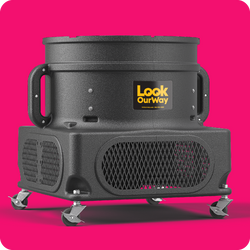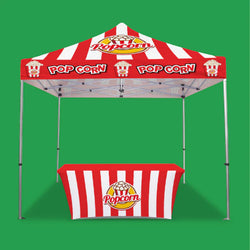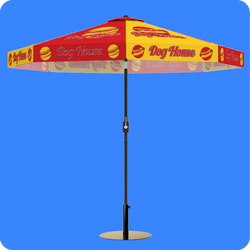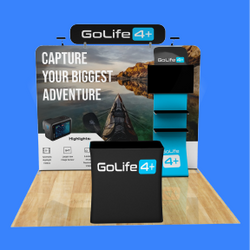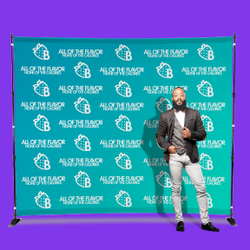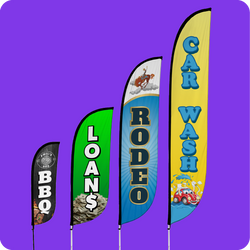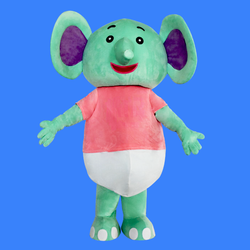How to Fold a Canopy Tent Properly for Storage
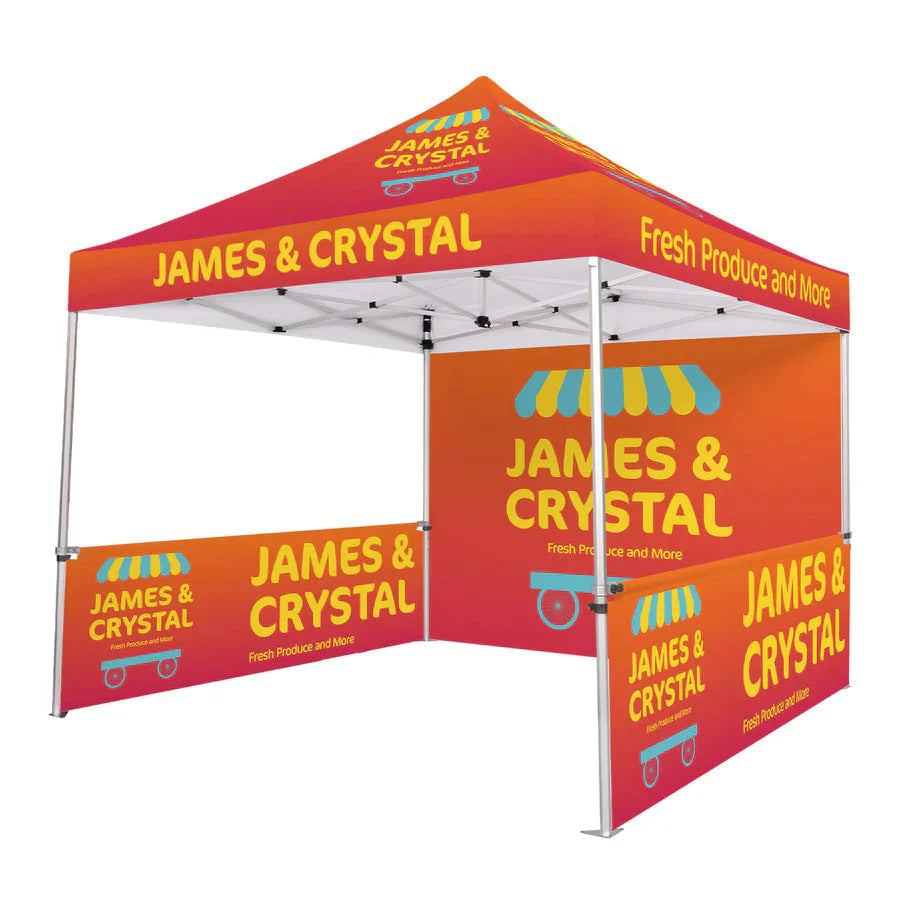
Have you ever finished a great day outside with a canopy tent only to struggle with packing it away? Properly folding a canopy tent is key to preserving it for future use, such as for a picnic, market, trade show, or beach trip. This guide will show you a simple, damage-free method, even if you're a beginner. You'll learn how to fold up a pop-up tent and pack it into its bag.
Preparations Before Folding
Cleaning Your Canopy
Start by brushing off any loose dirt or debris from the surface. For stubborn spots or stains, use mild soap and lukewarm water. Use a soft brush or cloth to clean the fabric. Avoid harsh detergents, as they can damage the canopy's material. Rinse with clean water to remove any soap residue.
Drying the Tent
Ensure your canopy is completely dry before folding. It prevents mold and mildew, which can ruin the fabric and cause bad smells. Leave the tent set up in the sun to air dry completely if possible. If you're in a rush or the weather isn't on your side, gently wipe down the fabric with a dry towel to speed up the process.
Gathering Necessary Materials
To store your canopy tent properly, you'll need a few items:
- Storage bag: This will protect your tent from dust and pests when not in use.
- Straps or cords: These are used to secure the tent fabric and frame. They keep everything compact and manageable.
- Desiccant packs (optional): Place them in the storage or roller bag to absorb moisture. This further protects against mold and mildew.
Step-by-Step Guide to Folding a Canopy Tent
Step 1: Disassembling the Tent
Firstly, you'll need to collapse and disassemble the tent frame safely.
- Lower the canopy: Start by carefully lowering the canopy top. A careful take-down will reduce any tension in the fabric and frame.
- Collapse the frame: Unlock any push buttons or levers that hold the frame open. Gently collapse the frame. Start from one side and move symmetrically to avoid putting too much pressure on any point.
- Sort the parts: Separate the canopy fabric, steel frame, stakes, and ropes. Organize each part and ensure they're all there. Clean and dry the stakes and ropes if needed.
Step 2: Folding the Canopy Fabric
To fold the instant canopy fabric correctly:
- Lay the fabric flat: Spread the fabric out on a clean, dry surface to avoid dirt and stains.
- Fold gently: Begin by folding the fabric inward from the sides towards the center. Continue folding until the fabric is a manageable size. Avoid sharp folds to prevent creasing and fabric damage.
- Smooth out air: Press gently on the folded fabric to remove any trapped air or extra bulk.
Step 3: Organizing the Frame for Storage
Properly storing the frame prevents damage and makes the next step easier.
- Collapse it fully: No parts should stick out. They could catch or tear the fabric.
- Secure the frame: Use straps or bungee cords to secure the collapsed frame tightly. This prevents it from unfolding during storage.
- Protect the frame: Wrap frame parts in a protective material like bubble wrap or old towels. This prevents scratches and dents.
Step 4: Packing the Canopy and Accessories
Finally, pack everything into the storage bag.
- Place the fabric first: Lay the folded fabric at the bottom of the bag to create a cushion for the frame.
- Add the frame: Place the wrapped and secured frame on top of the fabric.
- Include accessories: Put the stakes, ropes, and other accessories in the bag. Use the remaining spaces or put them in the side pockets, if available.
Tips for Efficient Storage
Choose the Right Storage Location
You'll want to avoid places with huge temperature swings. Also, avoid places with high humidity or exposure to chemicals or sharp objects. They could damage the tent. Your storage area should be dry and cool. It should not allow direct sunlight, which can harm the fabric over time.
Store Your Folding Canopy Tent Vertically vs. Horizontally
How you position your tent for storage can make a big difference. Storing your tent vertically saves space. It can also reduce the risk of objects being placed on it. That could cause the frame to bend or the fabric to crease.
Laying the tent flat may prevent the fabric from sagging or stretching. Don't stack anything heavy on top to prevent pressure marks or damage.
Check on Your Canopy Periodically
Make it a routine to check on your tent, especially if it's stored in a remote storage unit or a seldom-used area. Look for signs of rodents and insects. They might chew the fabric or nest in it.
Some moisture might sneak in even with careful drying. Regular checks can catch any mold or mildew early before it becomes a bigger problem. Take the tent out and give it a quick setup to air out if possible. This helps prevent odors and keep the material fresh.
Common Mistakes to Avoid
When it comes to folding and storing your pop-up canopy tent, a few common slip-ups can lead to lasting damage. Awareness of these pitfalls can help you keep your tent in shape for years. Here are some key mistakes to watch out for:
Folding the Tent When Wet
One of the biggest mistakes is packing away your tent while it's still damp. Doing so can lead to mold and mildew growth. They smell bad, weaken the fabric, and cause stains. Always ensure your tent is completely dry before folding.
Ignoring Dirt and Debris
Skipping a quick clean-up might seem harmless. However, storing your tent with dirt, sand, or leaves on it can cause abrasion over time. These materials can grind against the fabric, creating tiny cuts or wear spots. A simple wipe-down or brush-off before packing can prevent this issue.
Storing in Damp Locations
Storing the tent in a damp or humid area can cause mold and moisture damage. Choose a dry, well-ventilated area for storage. Avoid basements or sheds that tend to be moist or have fluctuating humidity.
Incorrect Folding
Improper folding can cause creases or stress on the fabric. This might weaken it over time. Follow the folding instructions or tutorial to ensure the fabric is neat and evenly folded.
Neglecting the Storage Bag
The storage bag is there for a reason—to protect your tent when it's not in use. Squeezing your tent into a bag that's too small exposes it to dust, pests, and moisture. Ensure your tent fits in its bag, and repair any tears in the bag as soon as they appear.
Order Your Canopy Tent Today
Folding and storing your canopy tent properly keeps it ready for the next event. These guidelines and tips will keep your canopy looking good and working well. Caring for your tent is key, whether you're preparing for a market, a beach day, or any outdoor event. It ensures a hassle-free time.
Do you still have questions about folding or storing your pop-up tent? Are you a camper or looking for the best pop-up beach tent? Don't hesitate to reach out for personalized guidance and expert tips. You can check out our collection of custom canopy tents. You can also submit a free design request and see your mockup in about an hour!




